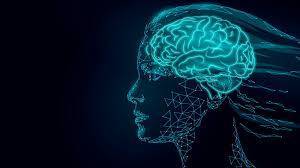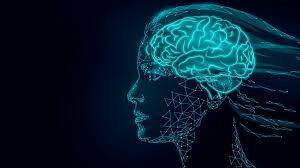Neuroscientist Jimo Burgein has noted the lack of sufficient knowledge regarding what happens in the human brain during the process of dying, even though "death is an essential part of life." Her interest in this fact began about ten years ago by "pure coincidence." In an interview with BBC News Mundo, she said, "We were conducting experiments on rats and observing their neurochemical secretions in the brain after surgery, when suddenly two of these rats died." These experiments allowed Burgein to observe the process of brain death. She stated, "One of the rats showed a tremendous release of serotonin. Was this rat hallucinating? I was surprised." She adds, "Serotonin is linked to hallucinations."
What does a person see in the weeks leading up to death? Experiences of people who returned to life after facing death piqued the curiosity of the neuroscientist as they witnessed massive serotonin secretion, a chemical that controls mood. She remarked, "This prompted me to conduct a study over the weekend, and I believed there must be an explanation. I was shocked that we know so little about the process of dying."
Burgein, an associate professor of molecular and integrative physiology and neuroscience at the University of Michigan, has dedicated herself since that time to studying what happens in the brain during the dying process. She states that her discoveries contradict everything previously assumed.
The brain in a state of "hyperactivity" was observed in a study conducted in 2013 on rats, where excessive activity in multiple neurotransmitters was noted after cardiac arrest in the animals. She mentions, "Serotonin increased by 60 times, and dopamine, a chemical that makes you feel happy, significantly increased by 40 to 60 times." Moreover, "Norepinephrine, which makes you feel extremely alert, increased by about 100 times." Burgein points out that "it is impossible to detect such high levels of secretions when the organism is alive."
Furthermore, in 2015, the team published another study on the brains of dying rats. She states, "In both cases, 100 percent of the animals showed significant functional brain activity." She adds, "The brain is in a state of hyperactivity."
In 2023, the team published a study focusing on four patients who were in a coma but still alive due to being on life support. Electrodes were placed to regulate the brain's electricity to monitor its activity. These four patients were dying, and doctors and their families "believed they could not help them, so they decided to let them face death." With the consent of their relatives, the doctors stopped the life-sustaining ventilators.
Researchers observed that two of the patients exhibited substantial brain activity, indicating cognitive functions. They also discovered gamma waves, the fastest brain waves, which process complex information and memory. They noted excessive activity in the temporal lobe on both sides of the brain for one of the patients. Burgein points out that the right temporal lobe is known to be crucial in generating a sense of others: "Many patients who survived cardiac arrest and had near-death experiences say it made them better and enhanced their ability to sense others."
Individuals who have experienced near-death situations report seeing scenes from their lives flashing before their eyes or recalling significant moments. Many mention seeing a bright light, while others describe their experiences as out-of-body, observing the scene from above. The question arises: can the excessive brain activity, observed by Burgein in her studies, explain why some individuals have such profound experiences when nearing death? She answers, "Yes, I believe so." She adds, "About 20 to 25 percent of cardiac arrest survivors said they saw a white light or something, indicating activity in the brain's visual cortex." She states that in the case of the two patients who showed excessive brain activity after the ventilators were turned off, their visual cortex (which supports perceptual vision) exhibited intense activity "that may be associated with this visual experience."




